
Thank goodness for rhubarb!
Depending on where you live, it’s often the first fresh produce to show up in your garden or at the farmer’s market. That sharp, tangy bite of rhubarb is just what you need after months of eating heavy food during those cold, dark winter nights.
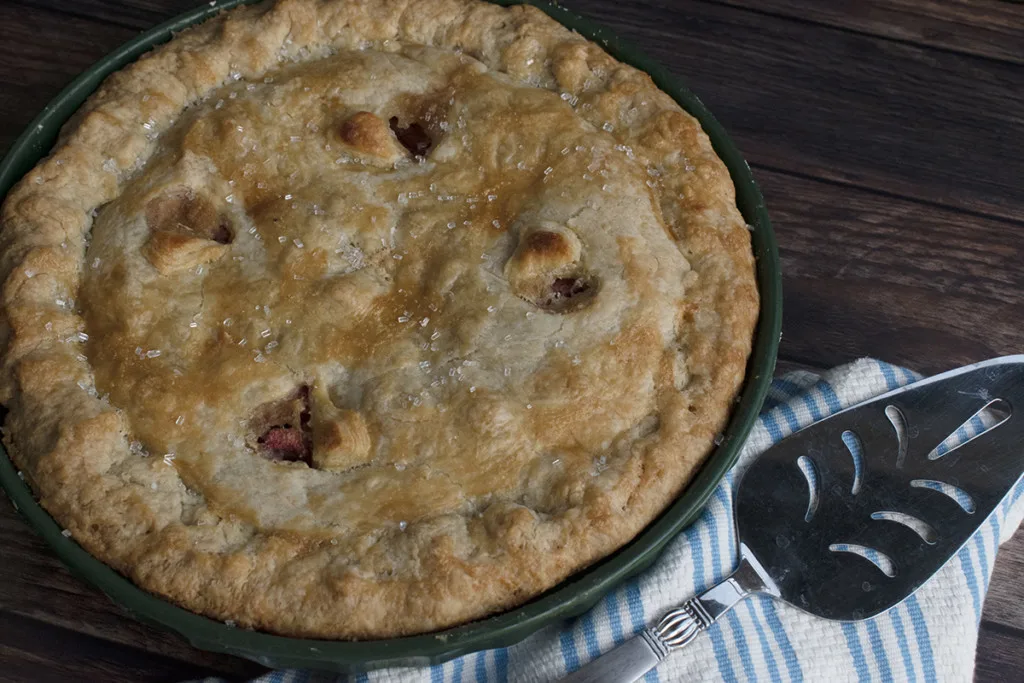
A slice of my mom’s rhubarb custard pie or tart and tangy rhubarb salsa is just the kick in the tastebuds we all need to celebrate spring and usher in a new growing season.
But hang on a minute; we’re not there just yet.
There are still a few frosts left and probably an onion snow before the nicer weather is here to stay.
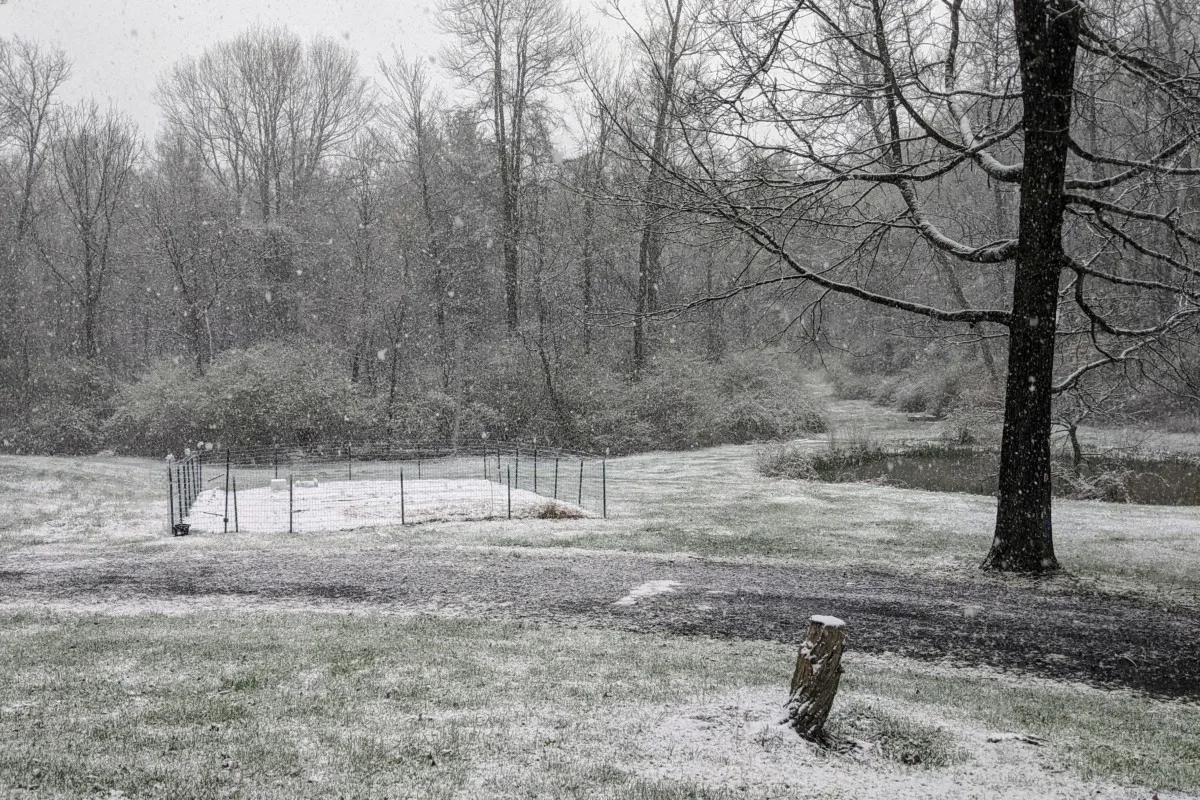
But if you’re dreaming of rhubarb skillet crisp topped with vanilla ice cream, you’ve got a few early spring chores to do. Don’t worry, it’s nothing too strenuous, but it will ensure a bumper crop of those gorgeous tart red stalks in a month or two.
Grab your gardening gloves and maybe a jacket because it’s cool out there, and let’s prep the rhubarb bed for another great year.
1. Clear the Crowns
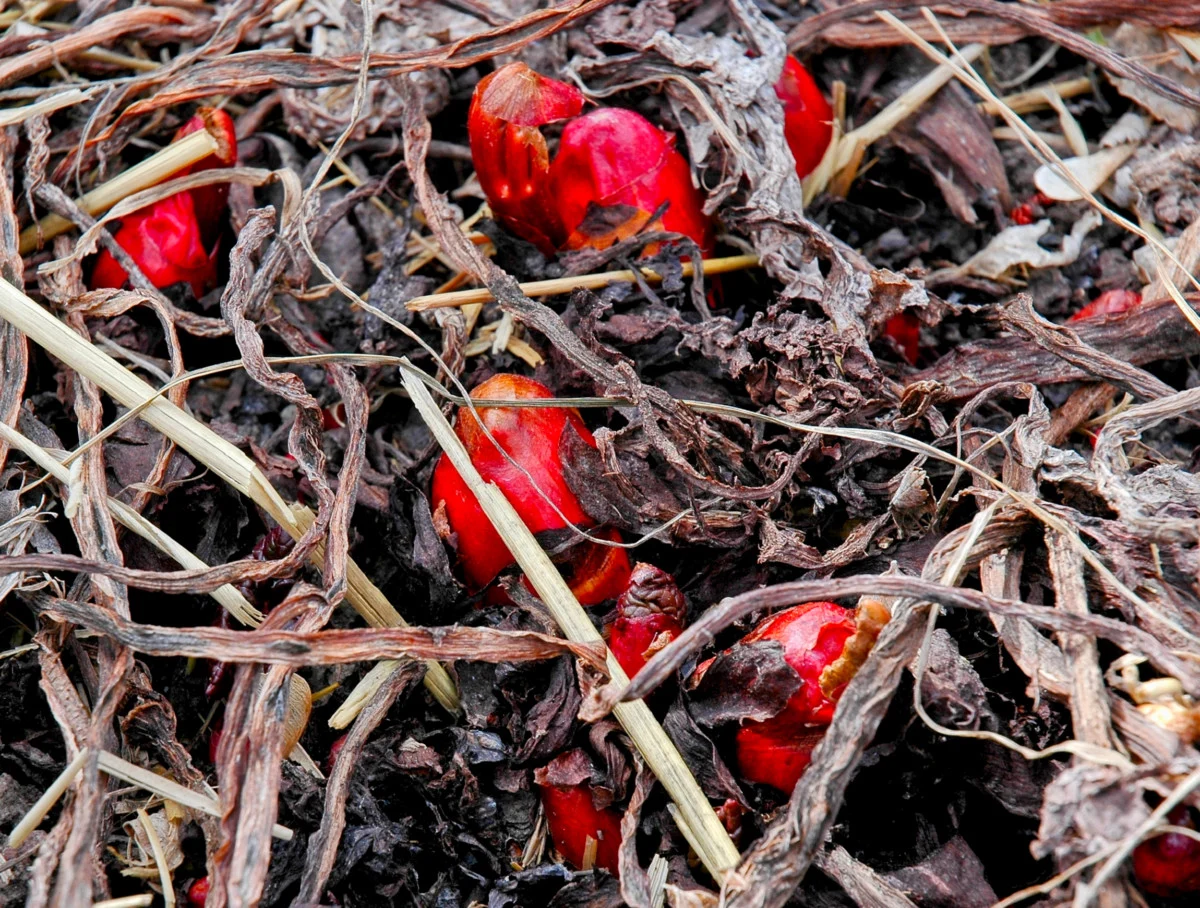
The first thing you’ll need to do is clear away the mulch you put down last fall to protect your rhubarb from extreme cold. You did remember to do that, right?
You’ll want to carefully remove the mulch you used to winter over your rhubarb. You can use a rake, but it might be better to use your hands as you don’t want to tear up the crowns and any new buds on your plants.
Remove all of the mulch and gently scratch up the ground around the plants to prep for fertilizing.
2. Time for a Change?
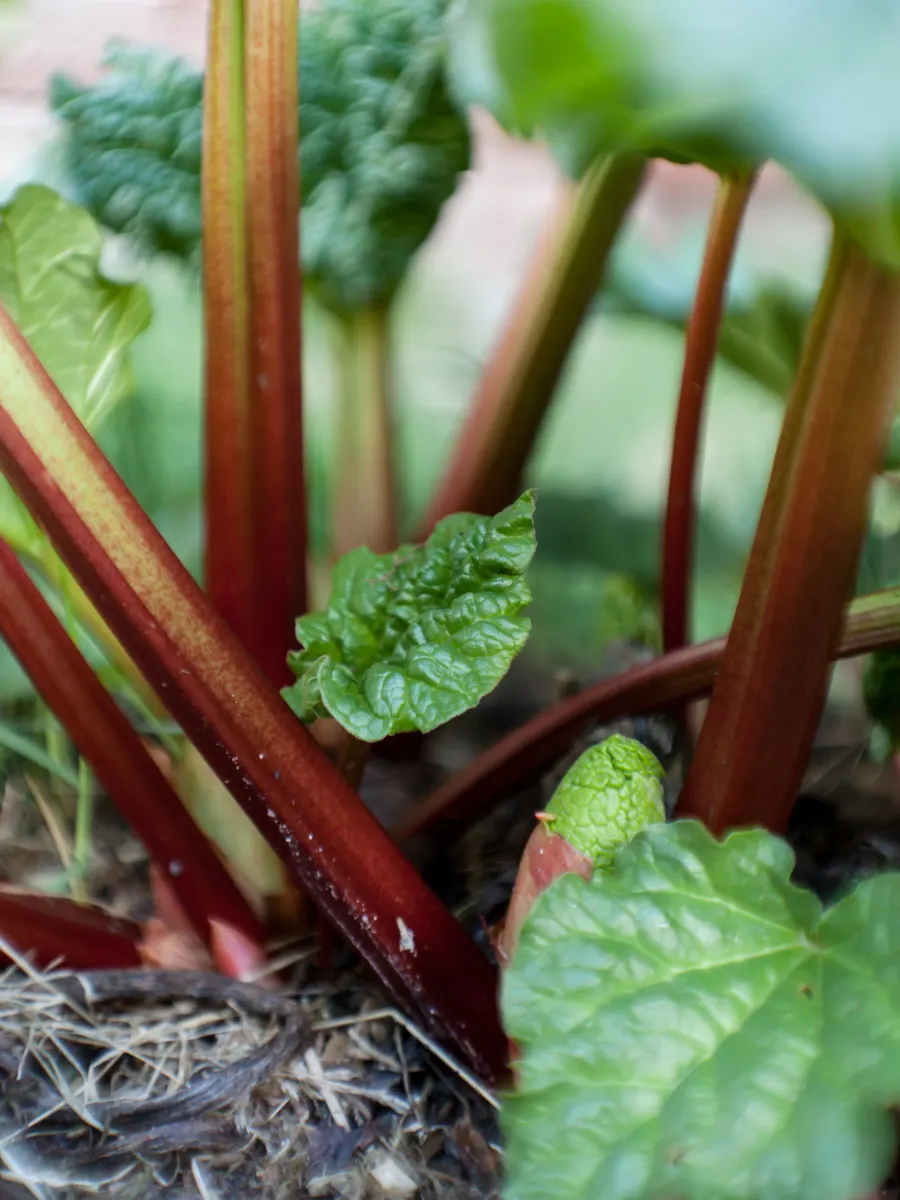
Now is a good time to relocate your plant if it hasn’t been performing well in the past. Is it not getting enough sun in its current location? Or perhaps last summer it got too much sun. Now is the time to lift the plant from the soil and relocate it to a more suitable spot in your garden.
3. Is It Time for a Little Rhubarb Math?
And by that, I mean does your rhubarb need to be divided?
If your plant is four to five years old and has grown significantly, it’s time to split the plant. Dividing an older plant every few years refreshes them and encourages new growth and more of those tasty red stalks.
Early spring is the best time to divide your rhubarb.
Using a garden fork, you’ll need to gently lift and dig up the plant, making sure you keep as much of the root system intact as you can. Then, using a clean knife, cut the plant into sections with at least one to three buds with roots attached.
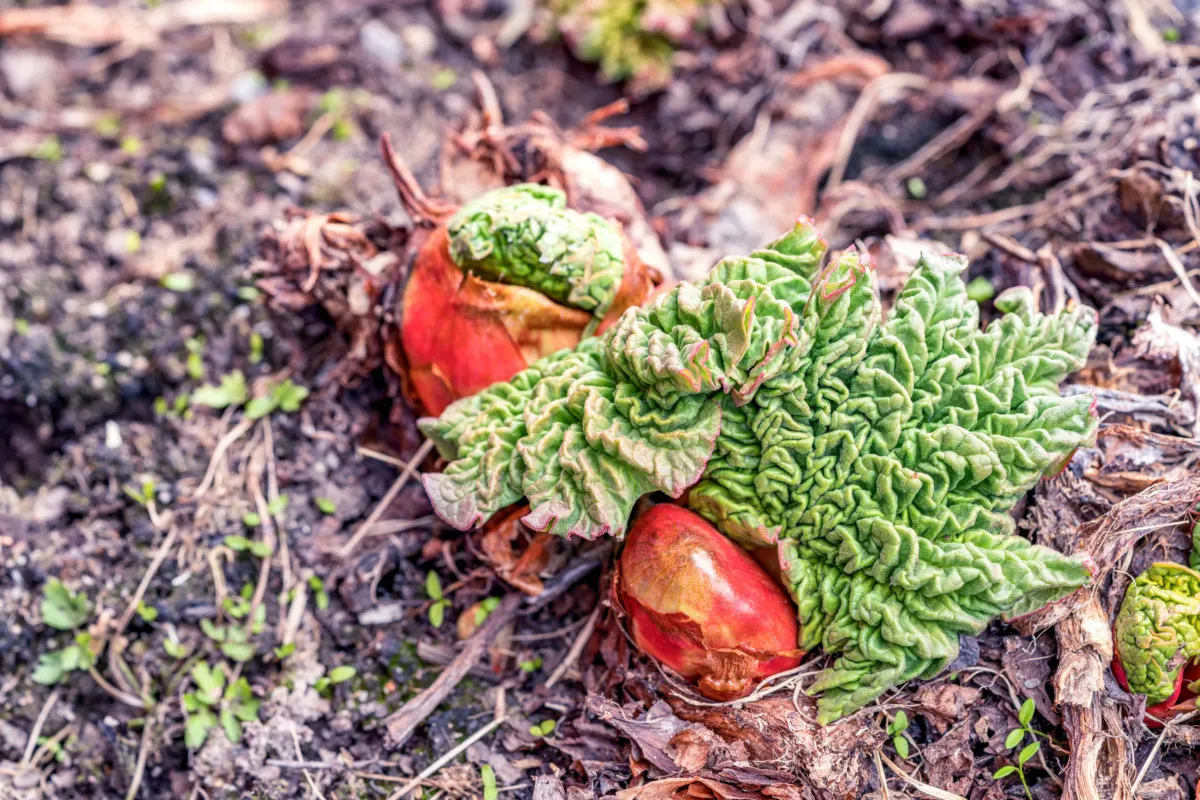
Depending on how old the plant is, you may need something larger to cut through the tough, woody rhizomes, such as a machete or hatchet.
Replant your cuttings immediately for the best results, or start the cuttings in a pot with fresh soil and pass them out to lucky family and friends. If, for some reason, you can’t get to the cutting right away, store them in a plastic bag with a damp paper towel wrapped around the roots, kept somewhere cool and dark until you can plant or pot them. A cool garage, basement or even your fridge will work.
4. Do You Need a Soil Test?
If your rhubarb is happily receiving the right amount of sunlight, but you’re still not getting a great harvest, perhaps a soil test is in order.
Rhubarb prefers slightly acidic soil, between 5.0 – 6.5 pH. Spring is the perfect time to amend the soil with a bit of sulfur to raise the acidity for a great harvest in a couple of months.
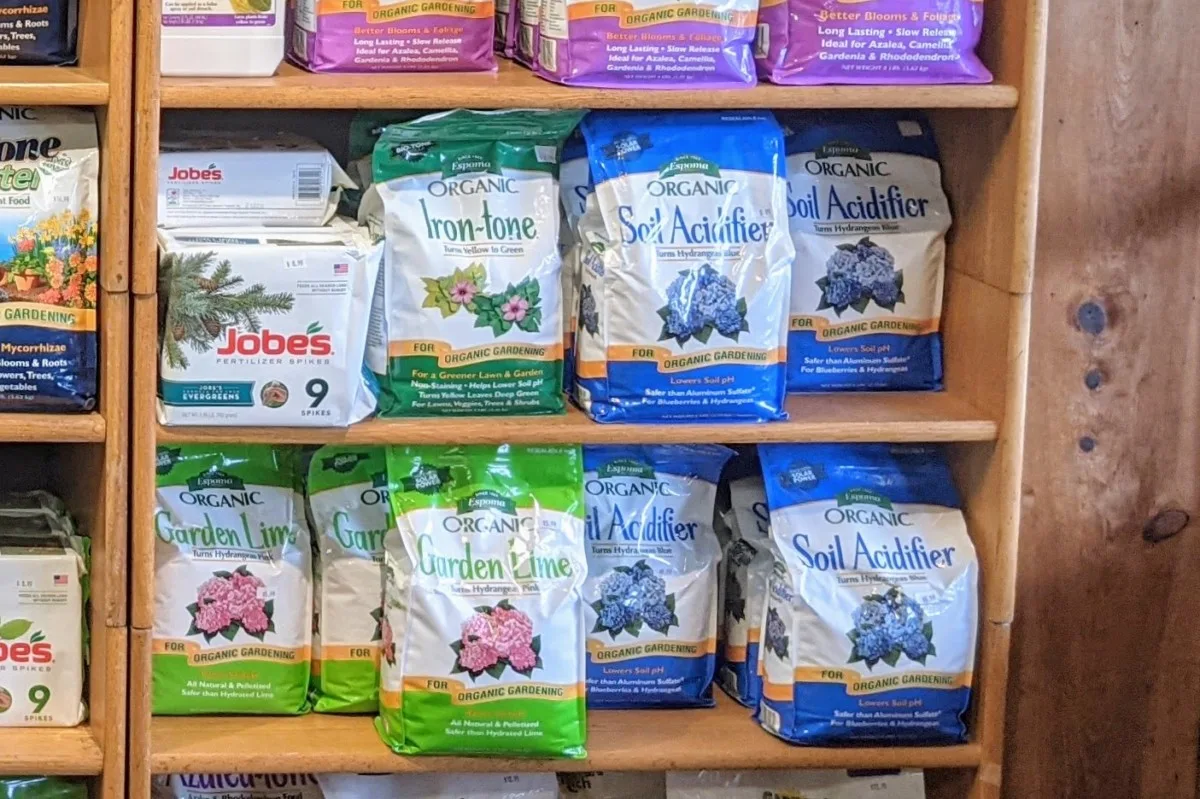
If needed, scratch in the recommended amount of soil acidifier along with the fertilizer. Espoma makes a great, easy-to-use soil acidifier that is easy to find at your local garden center.
5. Fertilize
Early spring is the best time to feed your rhubarb, ensuring a fantastic harvest in a month or two.
Use a fertilizer higher in nitrogen to encourage vigorous leaf growth and mix it liberally with the soil just around the crown. If you can find one, a liquid fertilizer is great for rhubarb, as you can make sure it reaches the roots directly.
Fresh compost mixed with manure is also a great option; again, scratch it into the soil around the plant, being careful not to disturb the crown, roots, or any buds.
6. Mulch and Wait
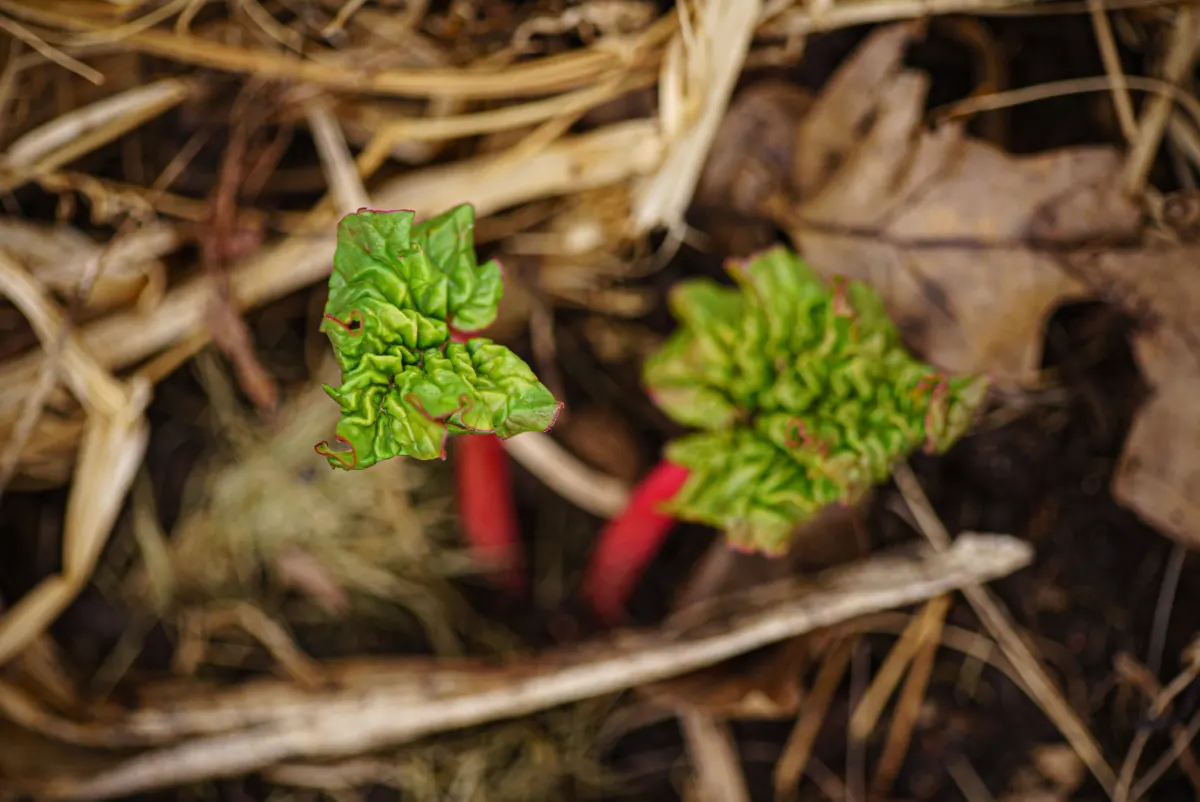
Lay down a fresh layer of mulch over your newly fertilized rhubarb (and perhaps newly planted cuttings) and wait. Before you know it, the winter weather will disappear for good, and the sun will have that rhubarb putting out bright red stalks with massive leaves.
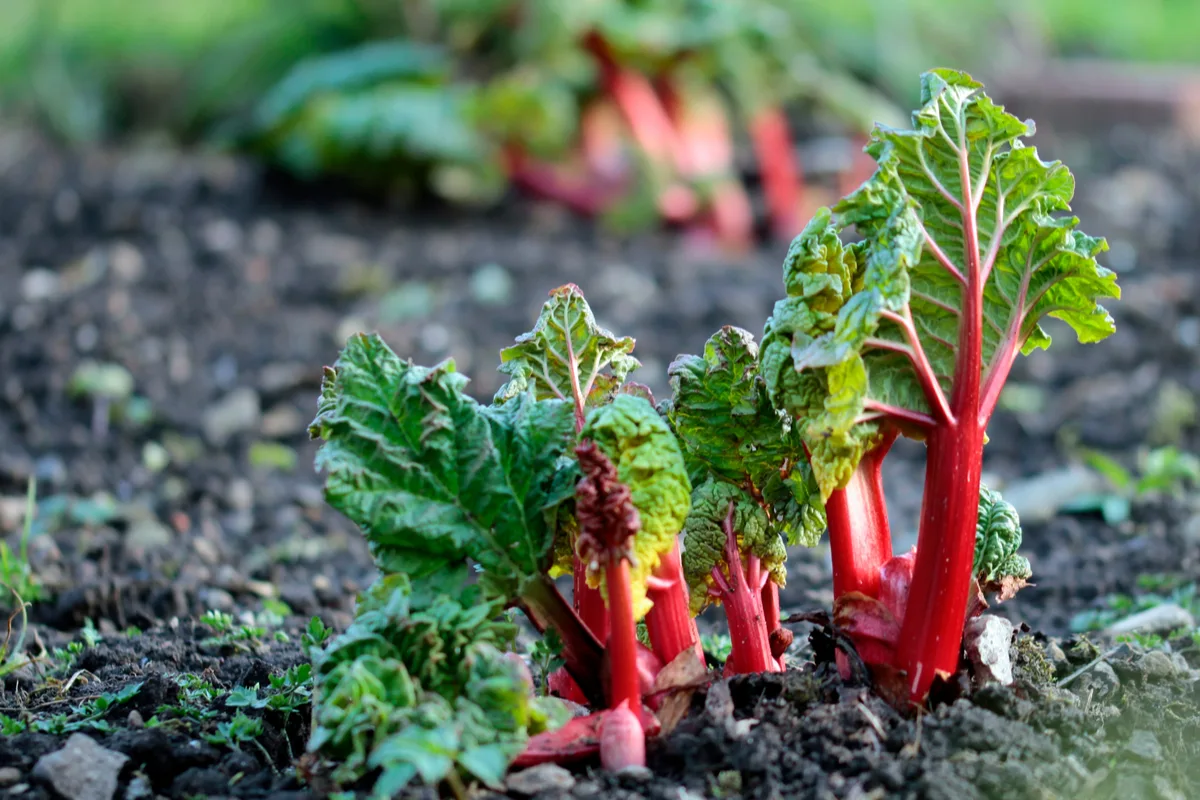
Don’t forget; the stalks are the only edible part.
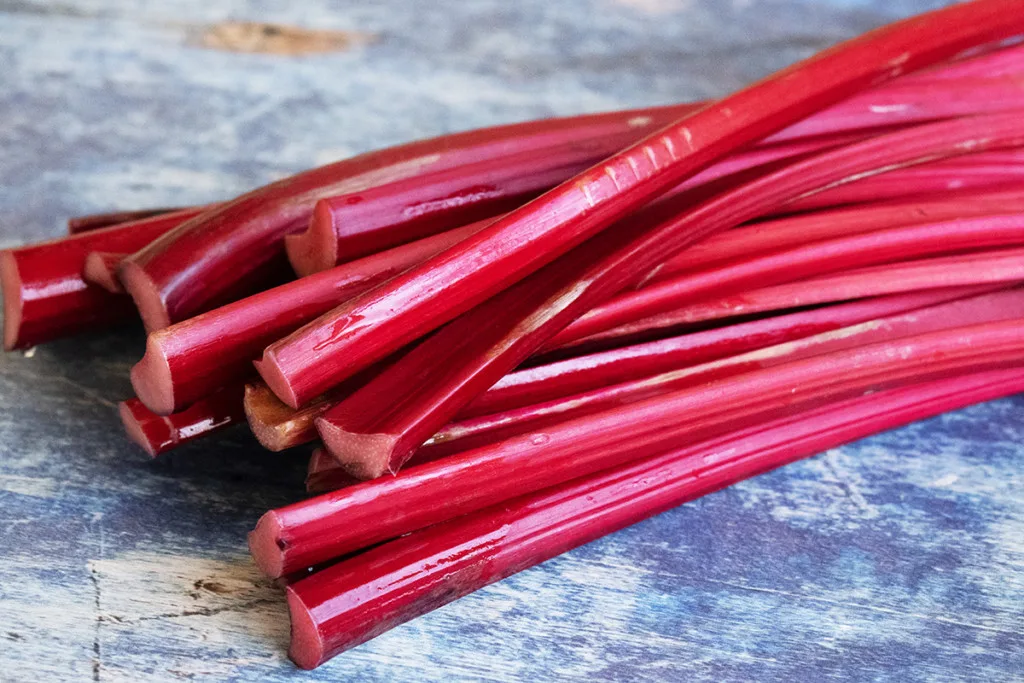
The leaves are poisonous but can be used in several ways around the garden.
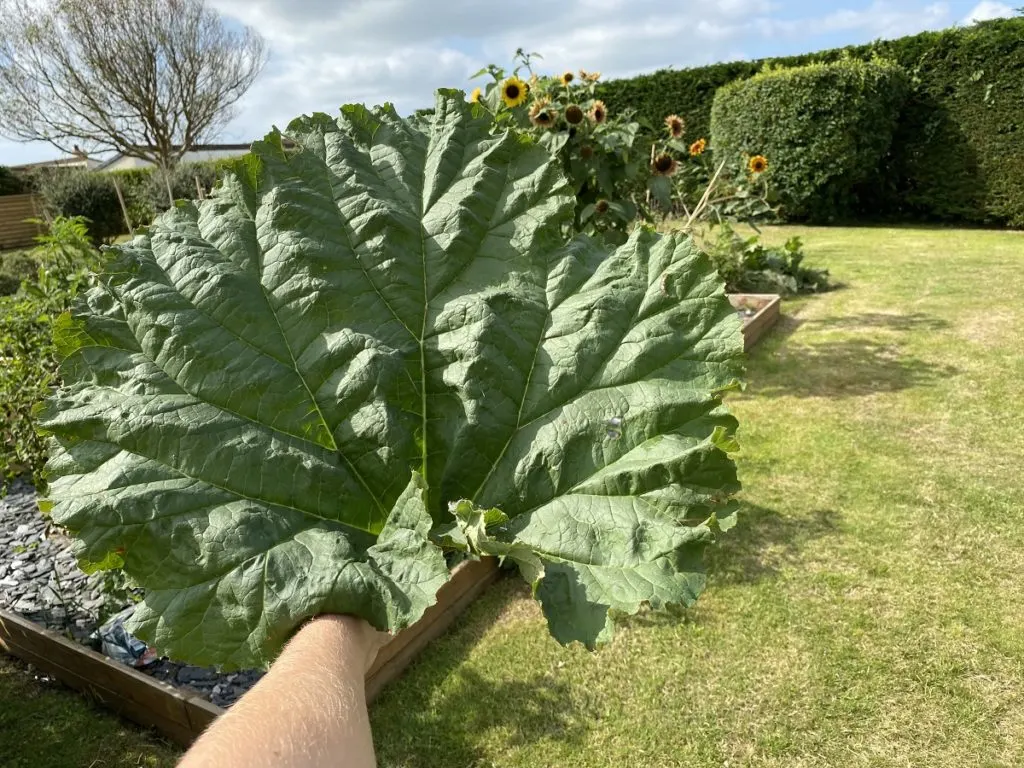
If your plant is still relatively new, only a year or two old, you’ll want to hold off on harvesting the stalks. You need to give the plant those first couple of years to get established. Then you can make as much rhubarb jam as you want.
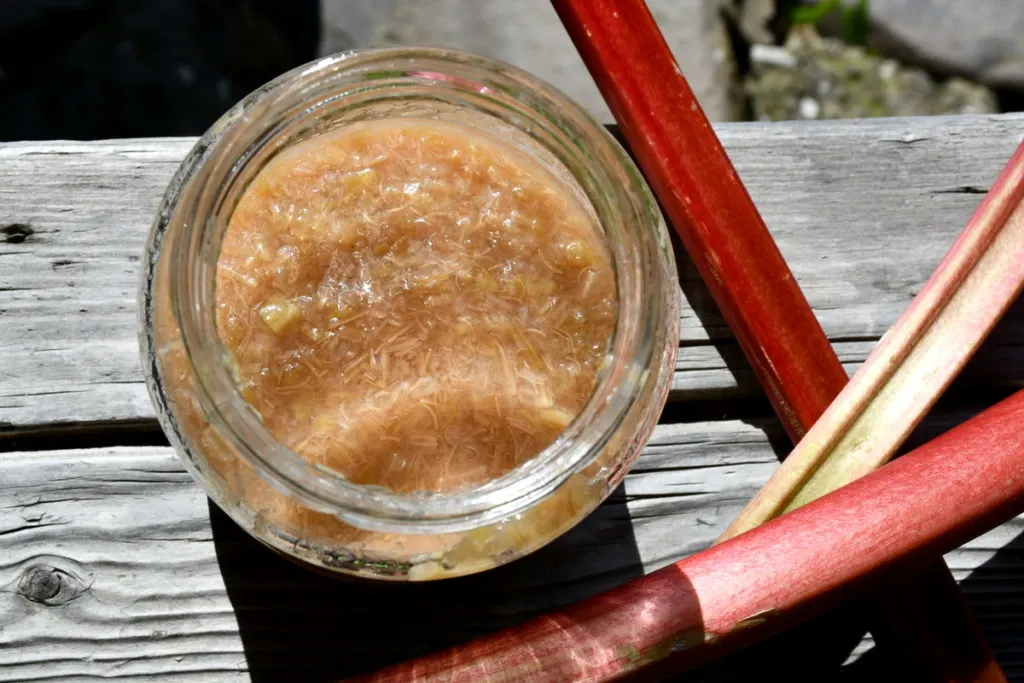
7. Enjoy a Forced Spring Treat
Of course, if you’ve forced any of your rhubarb plants, you’ll be able to enjoy those extra sweet and early stalks right about now. Forced rhubarb is a great reward after getting the rest of your rhubarb plants ready for spring. Think of it as a preview of things to come.
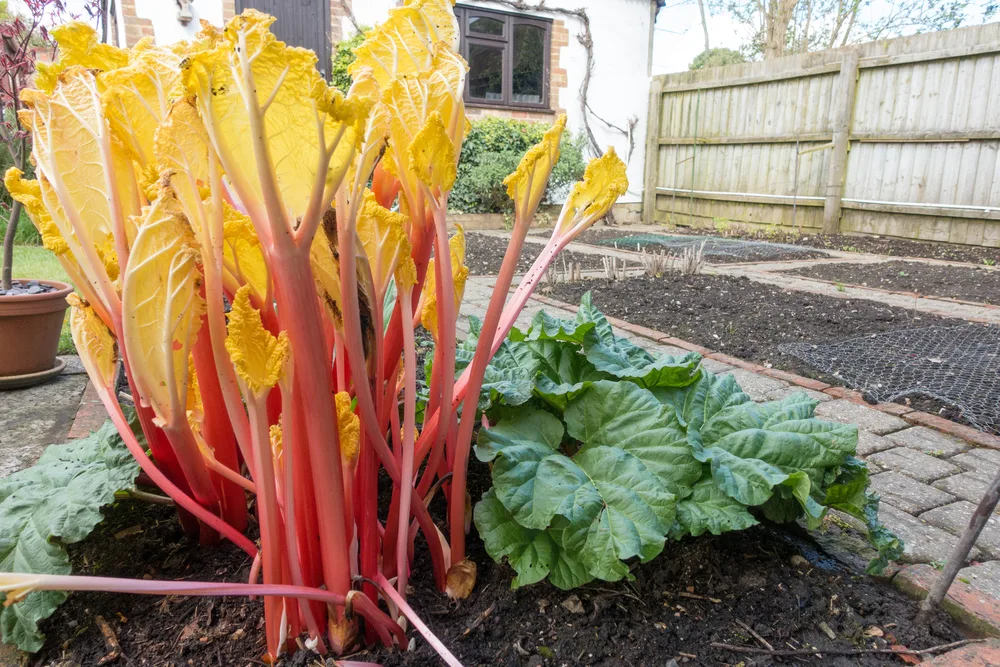
If you didn’t force your rhubarb, you might want to consider it next year. It’s best not to force all of your plants at once and only force early rhubarb on older, thoroughly established plants. Elizabeth has a great piece that walks you through the entire process of forcing rhubarb for an early spring harvest.
Now that you’ve got the rhubarb taken care of, why don’t you take a moment to fertilize the blueberry bushes so you can enjoy blueberry cobbler this summer too.

Get the famous Rural Sprout newsletter delivered to your inbox.
Including Sunday ramblings from our editor, Tracey, as well as “What’s Up Wednesday” our roundup of what’s in season and new article updates and alerts.

